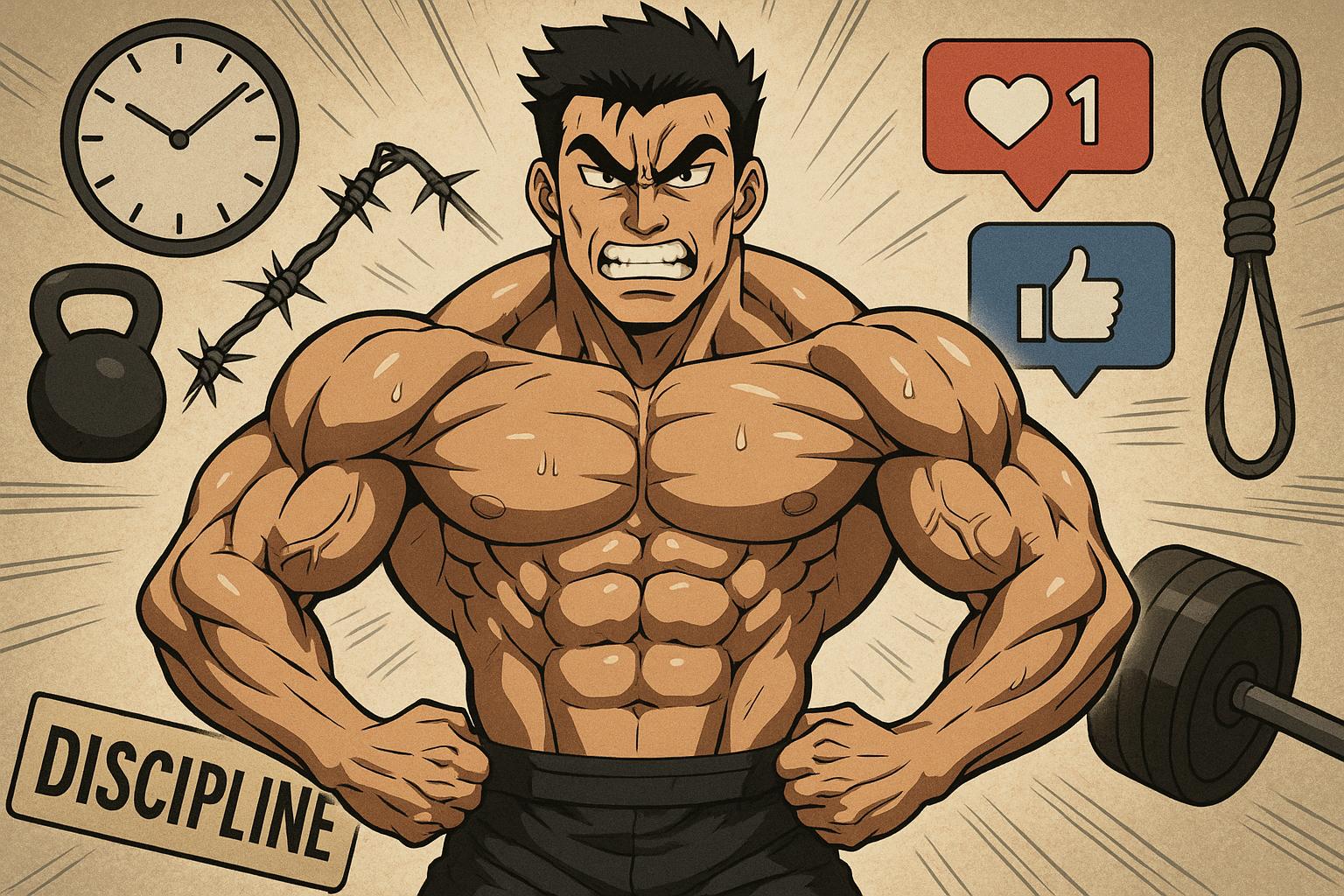The emergence of fitness influencers has transformed contemporary notions of masculinity, often glorifying extreme behaviours and harsh self-discipline as ideals of manhood. A notable example in this narrative is Brian Johnson, widely known as the Liver King, whose controversial practices have prompted broader discussions about health, authenticity, and the implications of so-called "performative masculinity."
Johnson's journey serves as a prism through which we can examine the extreme end of the fitness spectrum. At first, he built a significant online presence by promoting an “ancestral lifestyle” that emphasised raw organ consumption and rigorous workouts, all while espousing ideals of radical self-control. However, his recent admission of steroid use reveals a troubling disconnect between his public persona and personal reality. Though the Netflix documentary, Untold: The Liver King, details his rapid rise and resultant fall, critiques indicate it offers an excessively sympathetic portrayal, failing to robustly interrogate the potential harm inflicted on followers susceptible to his misleading guidance.
The underlying phenomenon illustrated by Johnson is reflective of a broader social media culture that rewards hypermasculinity. Analysis of platforms like Instagram and TikTok shows a substantial shift towards content framing extreme physical effort—and accompanying pain—as measures of masculinity. Influencers increasingly present their personal sacrifices, such as rigorous training regimens or extreme diets, as not just commendable but morally virtuous. They often attach militaristic rhetoric to their narratives, urging other men to approach fitness as a battleground—promoting concepts of resilience and discipline that can devolve into harmful practices.
As indicated by Strava’s recent report, younger generations are gravitating towards athleticism as a means of personal performance rather than for health benefits. Many Gen Z athletes demonstrate an inclination to push their physical boundaries, as seen in the growing popularity of ultramarathons and extreme endurance activities. This shift further emphasises a culture in which suffering is celebrated as an indicator of commitment and seriousness. The case of Nedd Brockmann, who undertook a grueling run across Australia to raise funds for charity, exemplifies this trend of using pain as a badge of honour.
Inevitably, the content that circulates and garners widespread recognition on social media triggers algorithms designed to amplify intense and emotionally charged posts. This mechanism results in a troubling cycle where influencers, seeking to thrive on these platforms, engage in increasingly extreme behaviours for views and monetisation opportunities. The imperatives of self-marketing lead not just to physical consequences, such as injury or hormone disruption, but also embody a broader ideological challenge. Young men are presented with a narrow definition of masculinity that equates worth with suffering, misplacing their understanding of manhood.
This presents a critical public health issue. As social media amplifies these messages of hypermasculinity, the need for alternative narratives becomes increasingly crucial. Rather than seeking to censor extreme fitness content, public health platforms and community programmes must strive to present healthier representations of ambition and masculinity. Initiatives like Tomorrow Man aim to foster spaces for building community and encouraging dialogue among young men, offering them healthier models to aspire to.
Without these counter-narratives, the spectre of self-inflicted hardship will remain the primary reference point for many young men. The challenge moving forward resides not in eliminating these extreme fitness influences but in reframing the conversation around masculinity, encouraging broader definitions of what it means to be strong, resilient, and ultimately, healthy.
Reference Map
- Paragraph 1: 1, 2, 3, 4
- Paragraph 2: 1, 2, 3
- Paragraph 3: 1, 4
- Paragraph 4: 1, 5
- Paragraph 5: 4, 7
- Paragraph 6: 1, 3, 6
- Paragraph 7: 1, 6
- Paragraph 8: 1, 3, 5
Source: Noah Wire Services
